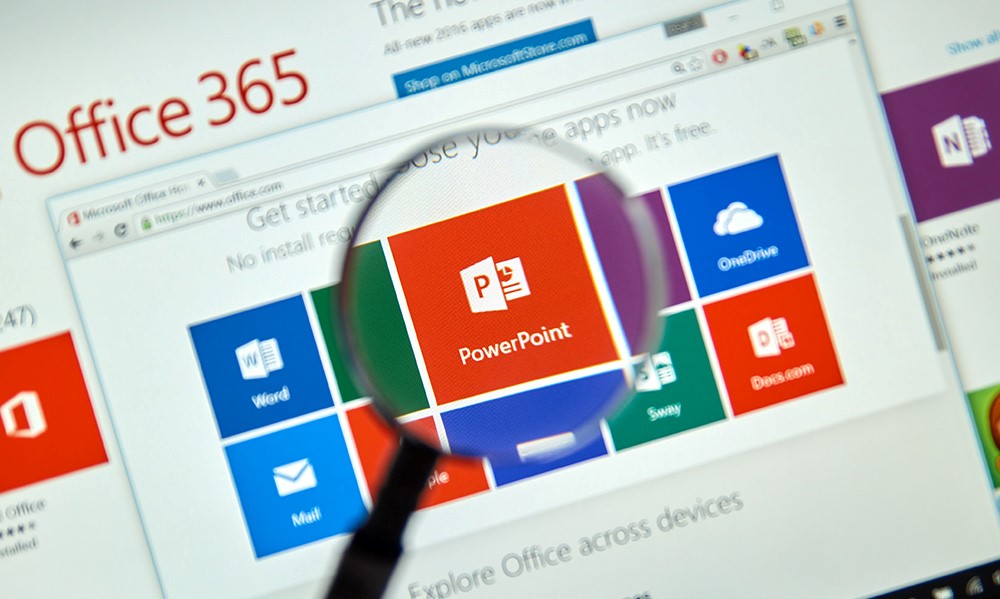Getting Started with PowerPoint Online
PowerPoint Online is the cloud-based version of Microsoft’s powerful word processing program. Using PowerPoint Online, you can create professional presentations of nearly any type. You can also add videos, pictures, and much more. Best of all, PowerPoint Online’s interface is intuitive and easy to use, so the tools you need will be easily accessible.
Logging into Office 365
Your first step before using PowerPoint Online is to log into Office 365 with your Microsoft account. To start, open your Internet browser and navigate to the login page at https://login.microsoftonline.com:
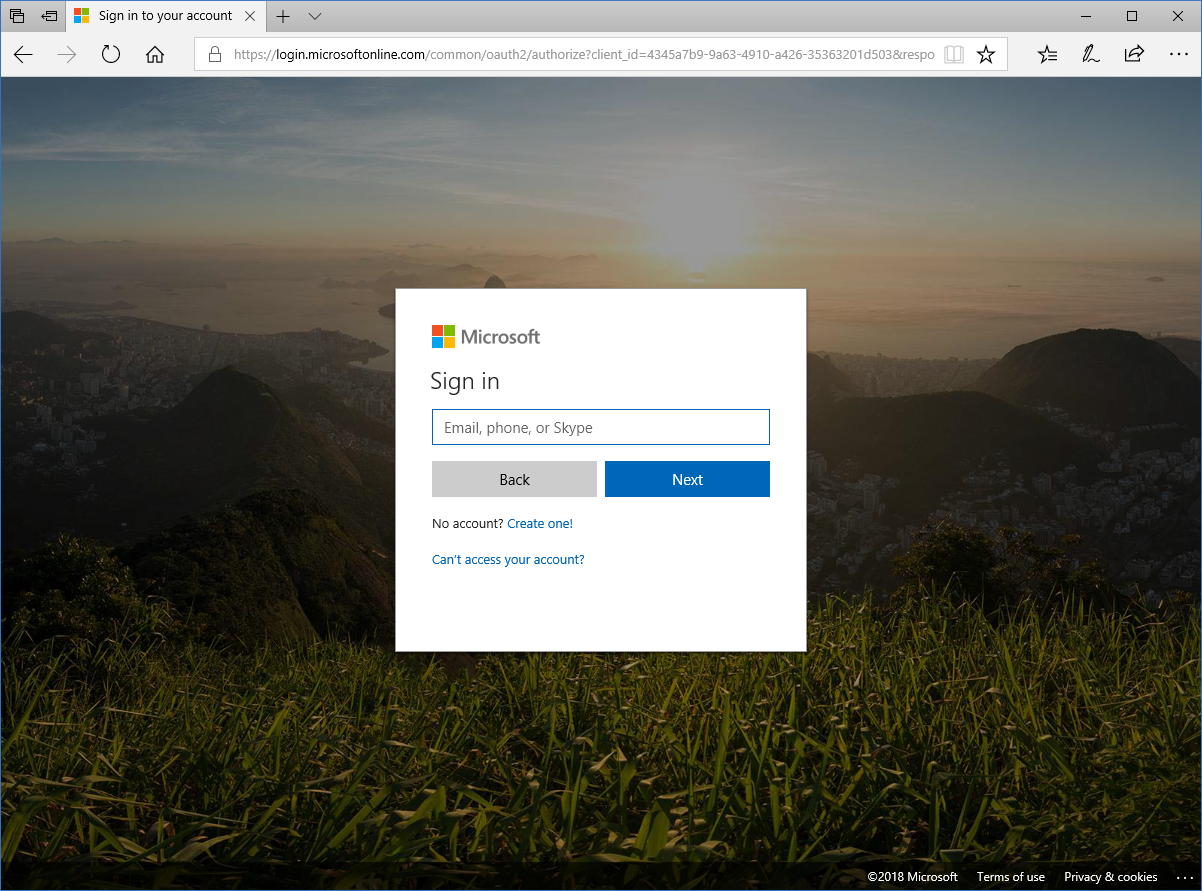
Instructor Tip: If you do not have a Microsoft account, you can create one directly from this page.
Then, enter your Microsoft account name and click “Next:”
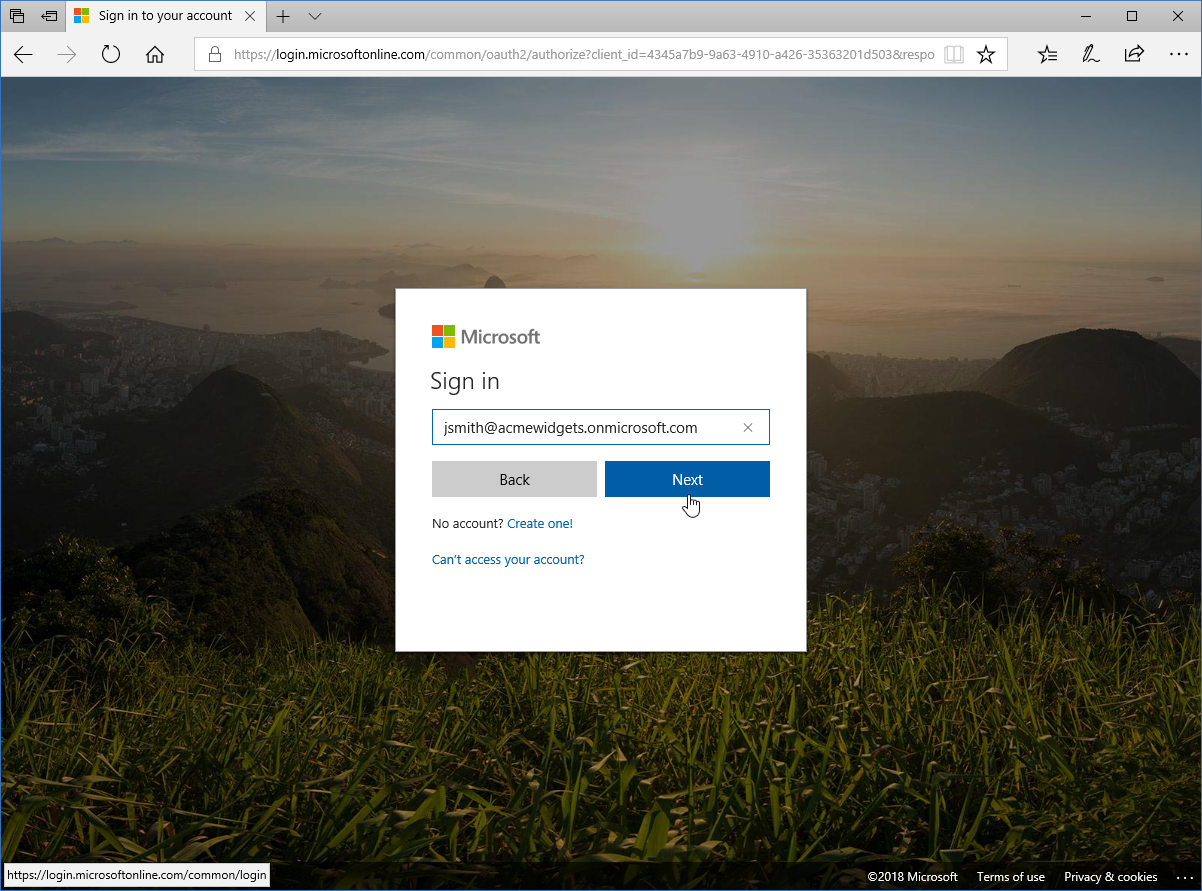
If prompted, choose the sub-account to sign in with:
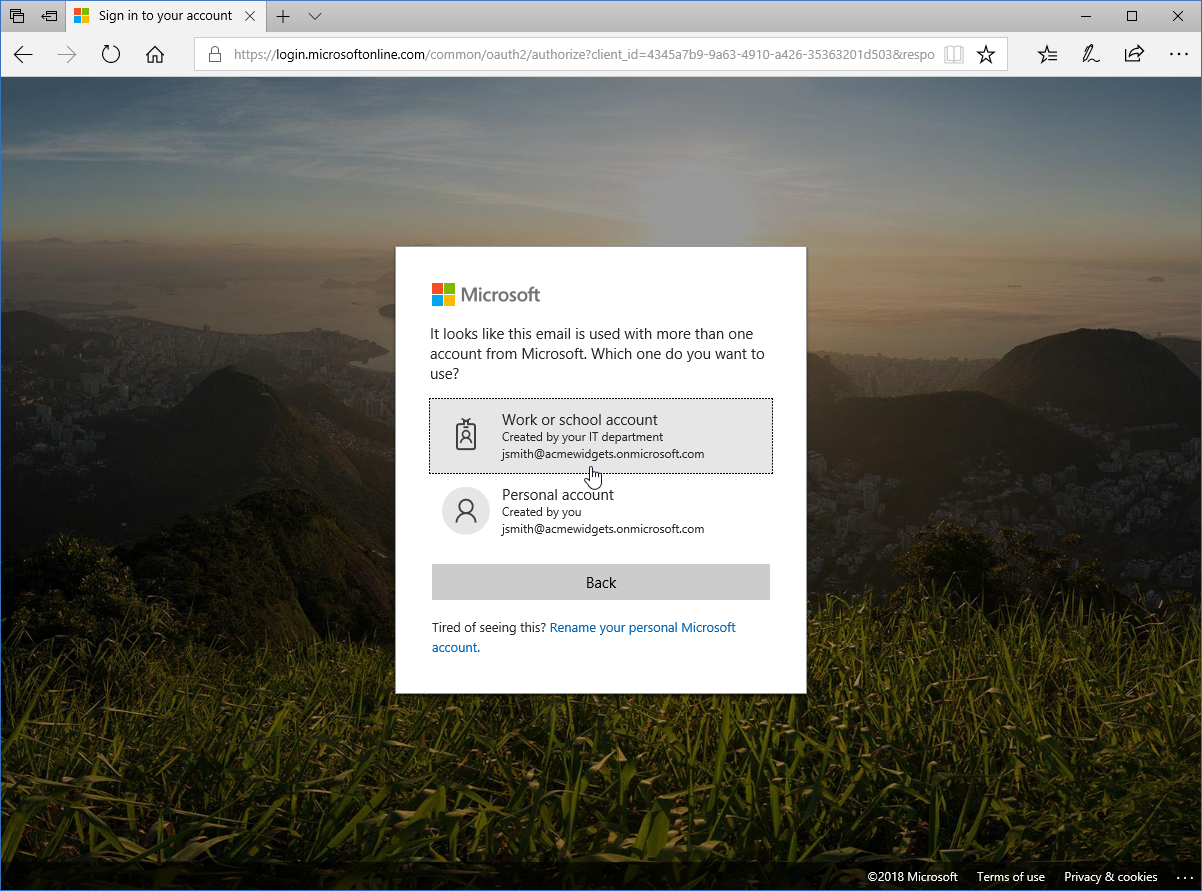
Finally, enter your password and click “Sign in:”
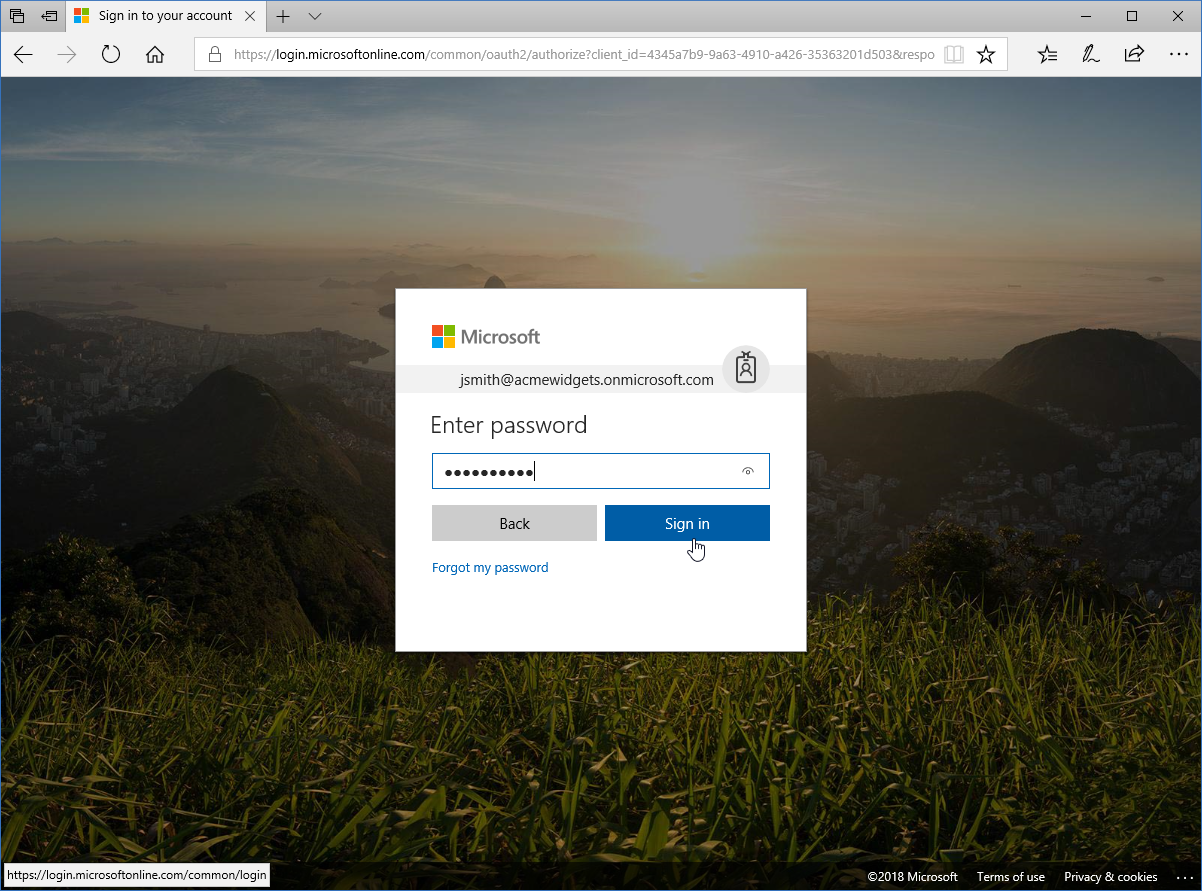
Now, you will see your Office 365 landing page:
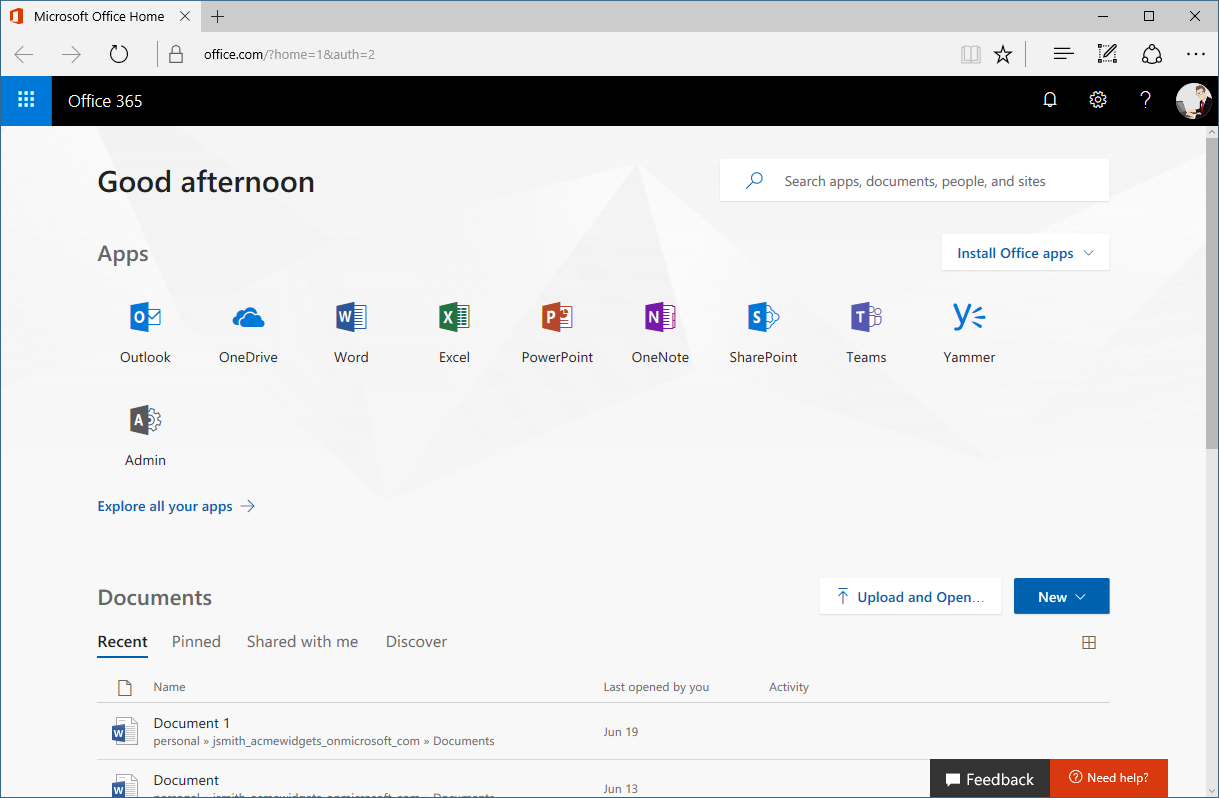
Launching PowerPoint Online
To start PowerPoint Online, simply click the icon on the Office 365 landing page:
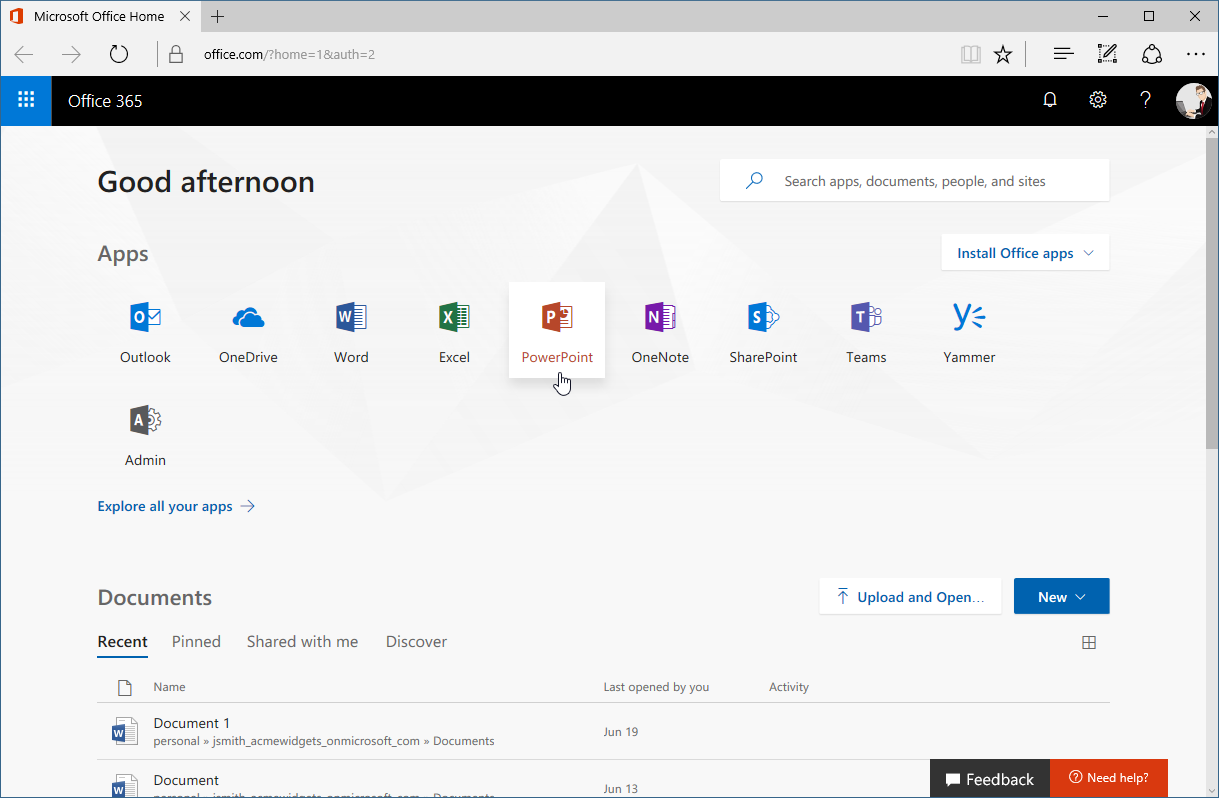
Instructor Tip: You can also click the app launcher in the top left corner and click the PowerPoint icon from the menu that appears.
PowerPoint Online will then open:
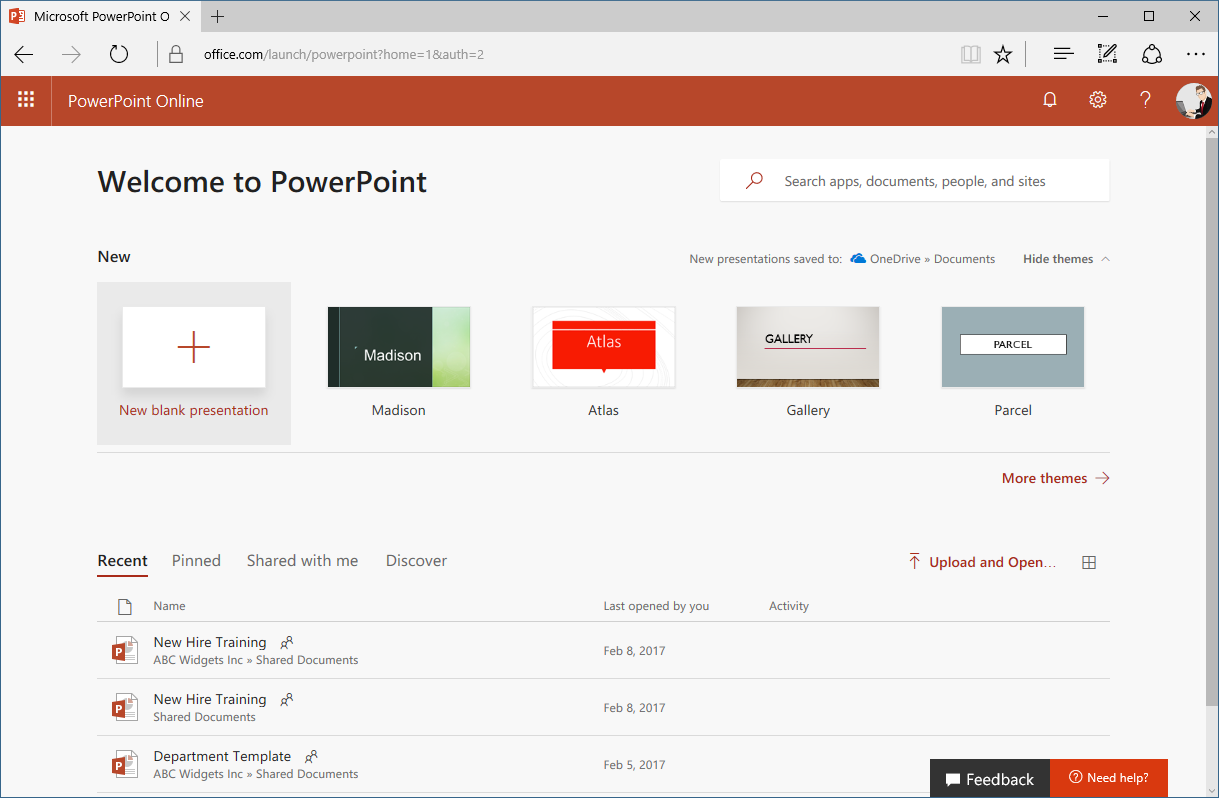
Creating a Presentation
When you open PowerPoint Online, you will be prompted to choose an existing presentation or create a new one. For this example, let’s create a new, blank presentation by clicking the related thumbnail:
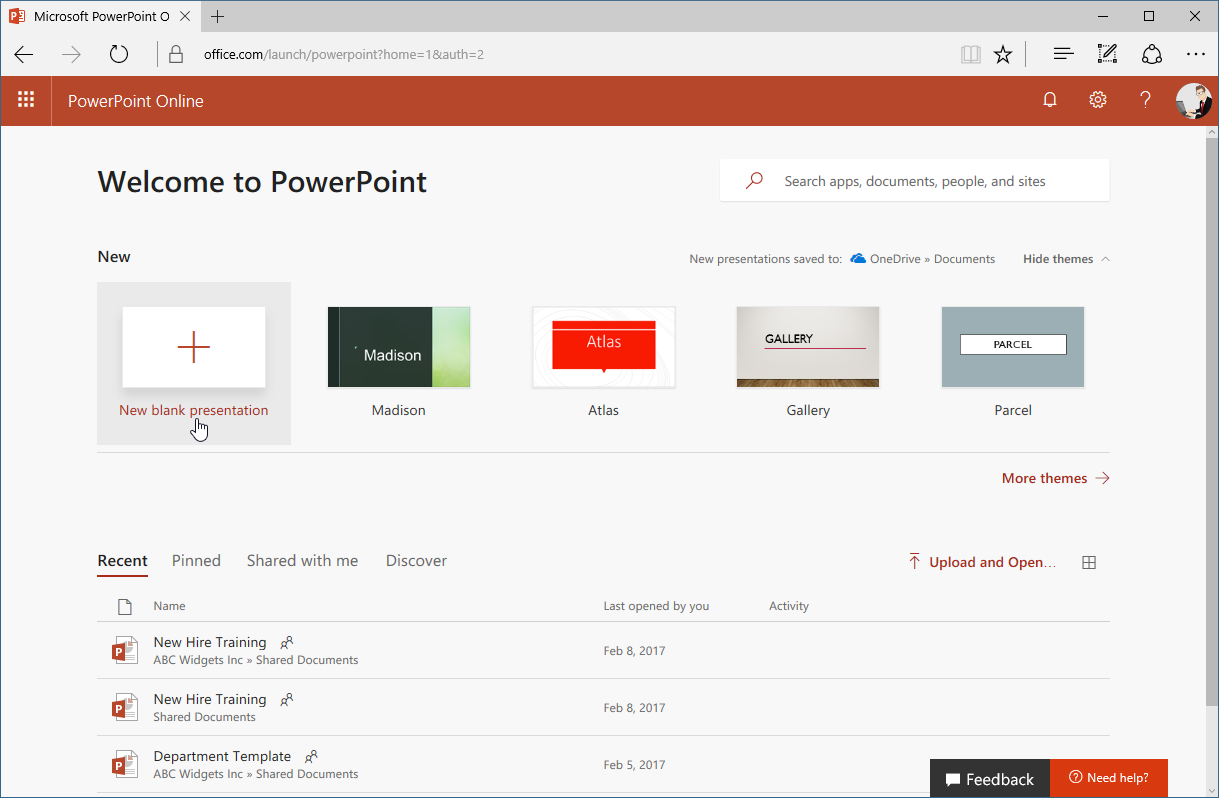
The presentation will be created and saved to your OneDrive account:
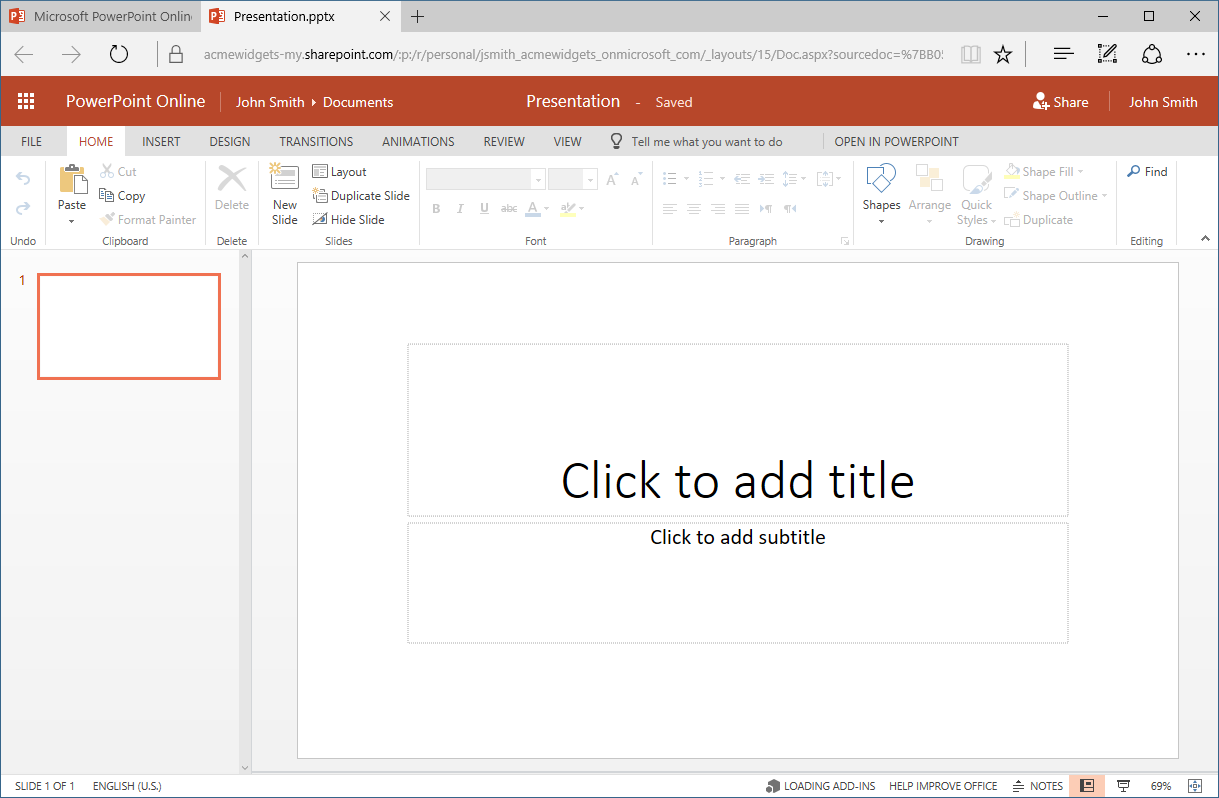
This presentation will use “Presentation” as the default name. To change its name, click the current name on the title bar, type the new name, and press Enter:
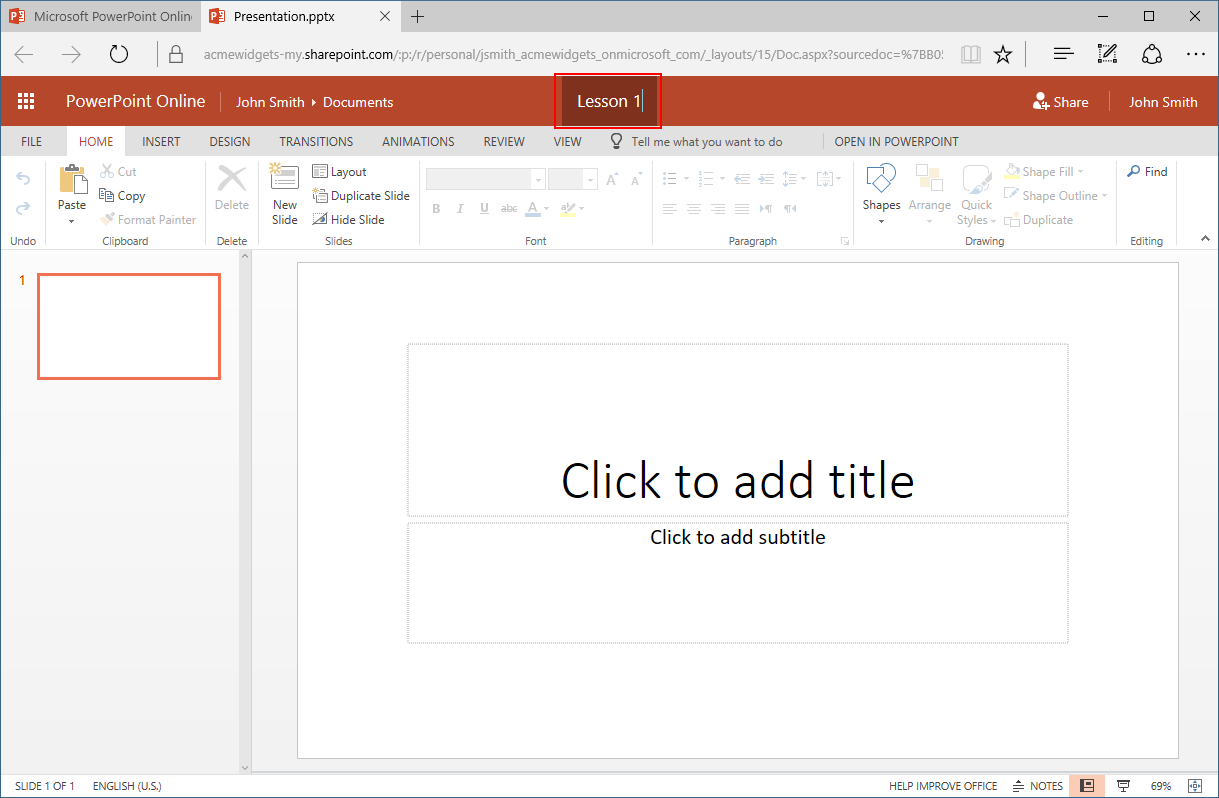
With your new presentation named, you can begin composing it just as you would in the desktop version of PowerPoint. (We will learn more about these features during the course.) As you continue to work on your presentation, it will automatically be saved.
The PowerPoint Online Interface
PowerPoint Online looks and operates in much the same way as its desktop counterpart:
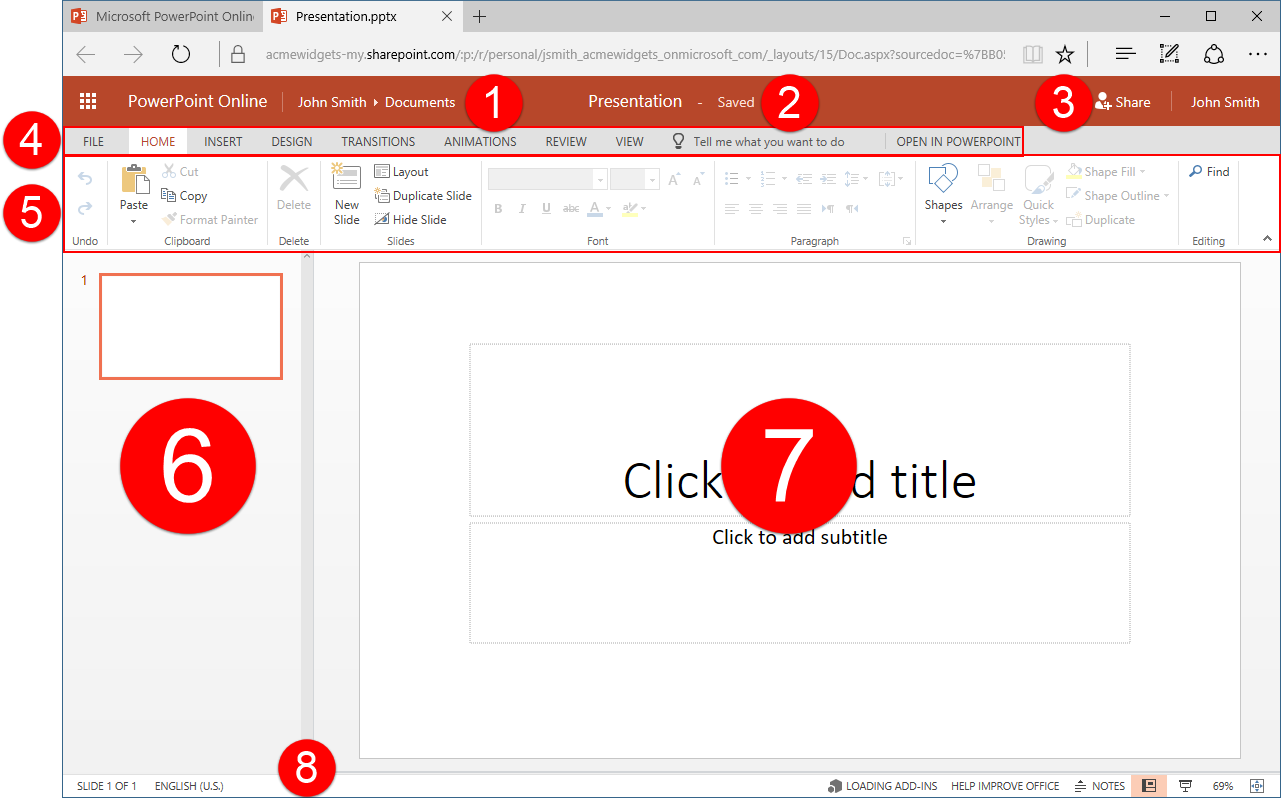
Let’s go over the basics of each element.
1: Navigation Commands
The top left part of the screen contains the app launcher (where you can access other Office 365 apps), the name of the app (PowerPoint Online), and a breadcrumb trail (with clickable links to other parts of your Office 365 profile).
2: Title Bar
The name of the current file is displayed here. You may also see more information about the file (for example, here you can see it has been saved). You can click the file name to change it.
3: Sharing Commands
Click this icon to share the current presentation. You can also view your Office 365 profile name here.
4: Tabs
Groups of like commands are organized under tab names. Click a tab to view the commands in the ribbon.
5: Ribbon Interface
Displays tab commands organized into groups. If you click the different tabs, you will see the commands change. Notice, too, that some of the commands might be grayed out. This is because those commands are only usable in certain situations.
Like the desktop version of PowerPoint, PowerPoint Online also features contextual tabs. These are special tabs that only appear when you are working with a specific object or group of information. For example, if you were to insert and select a picture, you would see a contextual tab offering commands for that object:
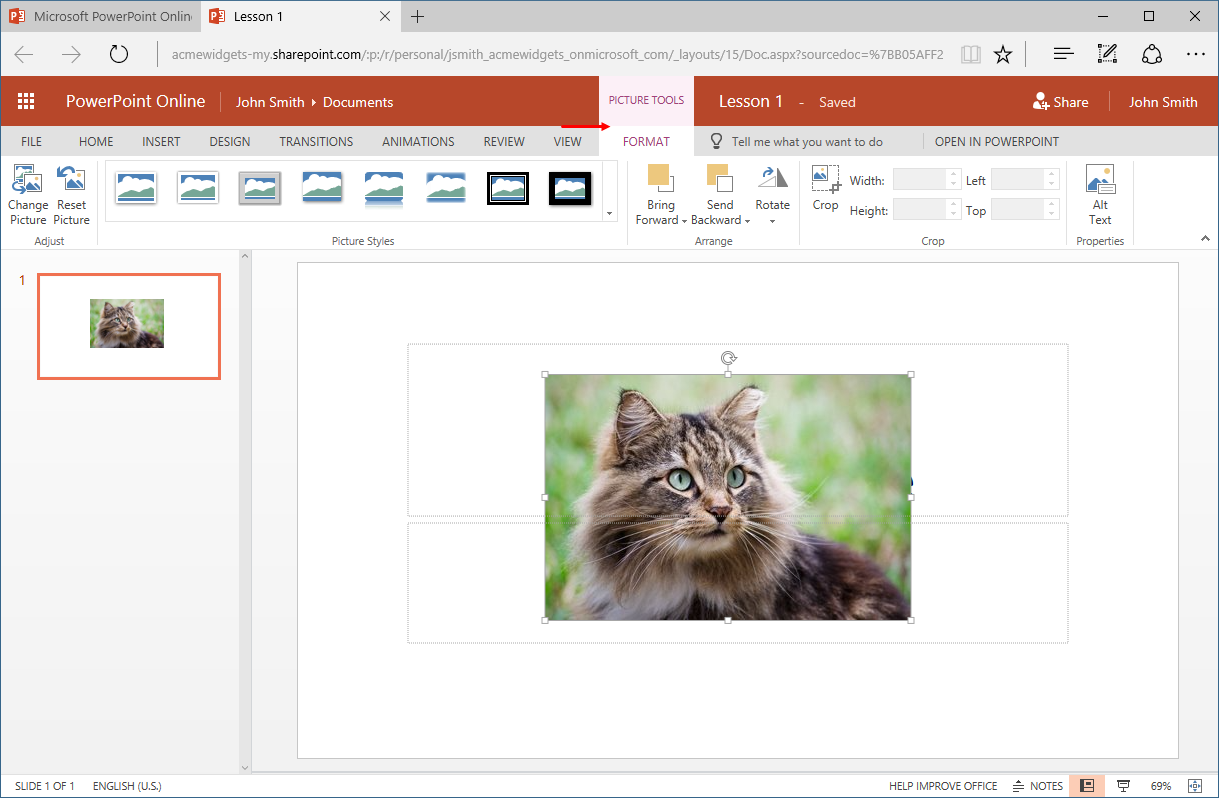
Once you switch to working with something else, this tab will disappear.
6: Slides Pane
Each slide in the presentation will be displayed in this pane as a thumbnail.
7: Working Area
The content in the currently selected slide will be shown here.
8: Status Bar
This bar is used to display information about the presentation. In the sample image, you can see the slide count and language on the left-hand side. (You may see other commands here depending on your current task.) On the right-hand side you will see commands to:
- Provide feedback about Office
- Show or hide the Notes pane
- Change the presentation view
- Change the zoom level
- Fit the slide view to the current window
Closing PowerPoint Online
Remember that PowerPoint Online is continually saving your presentation, so you do not have to worry about losing data when closing PowerPoint Online, and you do not have to manually save it either. So, once you have finished working on your presentation, you can just close the browser tab (or browser) in which PowerPoint Online is open.
This is an excerpt from Velsoft’s latest computer course release: Microsoft PowerPoint Online. The course is intended to help all users get up to speed quickly with PowerPoint Online. It covers: getting started with the app; creating and delivering a simple presentation; using formatting and editing tools; adding images, shapes, tables, and SmartArt; and finalizing a presentation.

